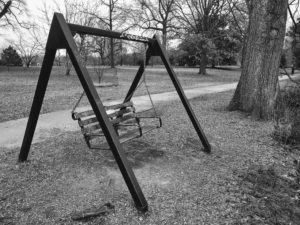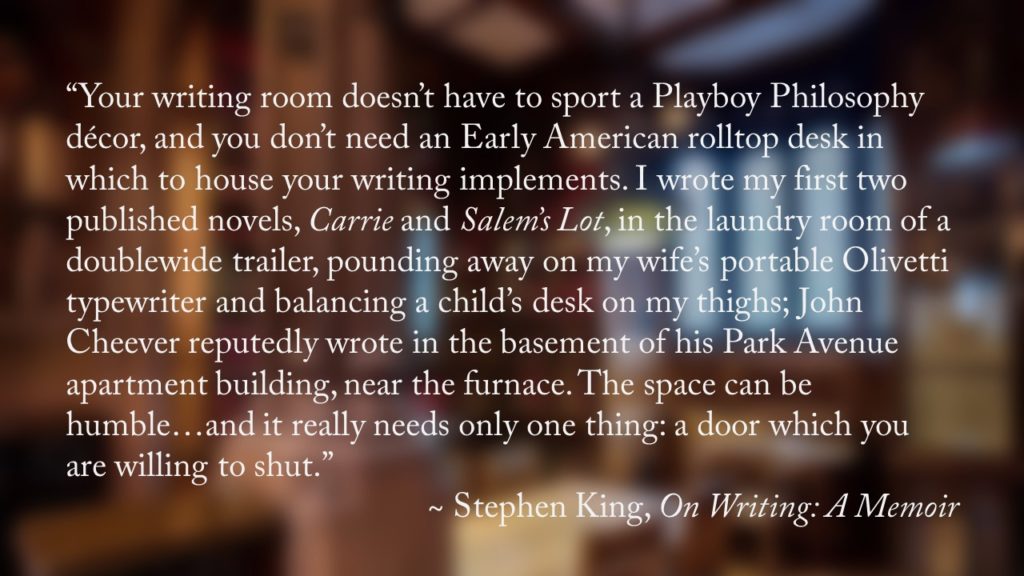 Emotion can have a huge impact on productivity. Increased stress or frustration can block creativity (although some people will argue that they personally need stress to perform, which is why some successful writers are also chronic procrastinators). There are many strategies for placing yourself in a preferred emotional state for optimal productivity. We mention only a few below.
Emotion can have a huge impact on productivity. Increased stress or frustration can block creativity (although some people will argue that they personally need stress to perform, which is why some successful writers are also chronic procrastinators). There are many strategies for placing yourself in a preferred emotional state for optimal productivity. We mention only a few below.
Food. Writer Brenda Miller writes, “Food is one of the most social gifts we have….When you sit down to unburden yourself to a friend, you often do so over a meal prepared together in the kitchen, the two of you chopping vegetables or sipping wine as you articulate whatever troubles have come to haunt you. When these predicaments grow overwhelming, we turn to comfort food, meals that spark in us a memory of an idealized, secure childhood” (8). So, yes, food can be a preferred source of comfort, a way of regulating emotion. However, eating can also be potentially unhealthy in sustained periods of stress, so keep that in mind too.
The editor of this website actually resorts to baking bread when he is stressed out. Something about mixing and kneading and folding helps him work out his turmoil.
 Relationships. By the way, have you talked to anyone recently? Even if you are an introvert, being around other people, people you like or who like you, can help put you in the right place emotionally. Sure, too much socializing and not enough elbow grease can get in the way of productivity, but generally speaking humans need each other to be emotionally healthy.
Relationships. By the way, have you talked to anyone recently? Even if you are an introvert, being around other people, people you like or who like you, can help put you in the right place emotionally. Sure, too much socializing and not enough elbow grease can get in the way of productivity, but generally speaking humans need each other to be emotionally healthy.
Space. Stephen King has something to say about creating a writing space in his book On Writing: A Memoir. In his opinion, you need a place to go where you can block out distractions and focus on the task of writing. We would also argue that having a familiar space with a door that you can shut and walls that you can decorate can also positively influence your emotional state. The space could be an office, a particular room in your house, or a nook in the library that no one else knows about.
If it’s a personal space, art or photography can help spruce up the dreariness of bare walls. They aren’t there to look at or become distractions, but rather to help the space feel more like an extension of yourself and your personality.

In addition to art or photographs, you might also try putting together a mood board for your wall or your computer. A mood board is a highly personal, physical or digital collage of images, inspirational quotations, or keepsakes/mementos. Unlike an ekphrastic slide show, a mood board does not supply inspiration so much as it helps you achieve an optimal emotional state that will allows to feel a certain way. If you can figure out what your optimal emotional state is, try crafting a mood board that can help you get there. For example, if you like to write about the environment or nature, something along the lines of this mood board might suit your needs. Or, if Charlotte Perkins Gilman is your literary idol, you might try something more along the lines of this one. Mood boards are easy to create in either a physical or digital form; you just need to locate some materials to display and arrange them in a way you find pleasing. If you think a digital mood board might be what you need (say, for example, because you tend to write anywhere you can find a spot on campus), try using an online design program such as Canva to put one together for your laptop wallpaper.
 Music. Music often affects our internal state by altering how we feel about our environment and ourselves, but different writers have different musical tastes. Some find music (or any media, for that matter, to be a distraction), while others find it helpful. In the latter group, we find writers who need lyrics to stimulate their creativity and others who find lyrics distracting and would rather listen to instrumental music. Some writers like Mozart, some prefer Metallica, and some prefer something more Gregorian, and it really does not matter as long as you find it productive.
Music. Music often affects our internal state by altering how we feel about our environment and ourselves, but different writers have different musical tastes. Some find music (or any media, for that matter, to be a distraction), while others find it helpful. In the latter group, we find writers who need lyrics to stimulate their creativity and others who find lyrics distracting and would rather listen to instrumental music. Some writers like Mozart, some prefer Metallica, and some prefer something more Gregorian, and it really does not matter as long as you find it productive.
Here are a few playlists other writers have created and found useful. (Note: We did not compile any of these Spotify playlists ourselves.) Peruse them, and maybe you will find something you like or feel inspired to create a writing playlist of your own:
Bibliography
King, Stephen. On Writing: A Memoir. Scribner, 2000.
Miller, Brenda, and Suzanne Paola. Tell It Slant: Creating, Refining, and Publishing Creative Nonfiction. 2nd edition. McGraw-Hill, 2012.
